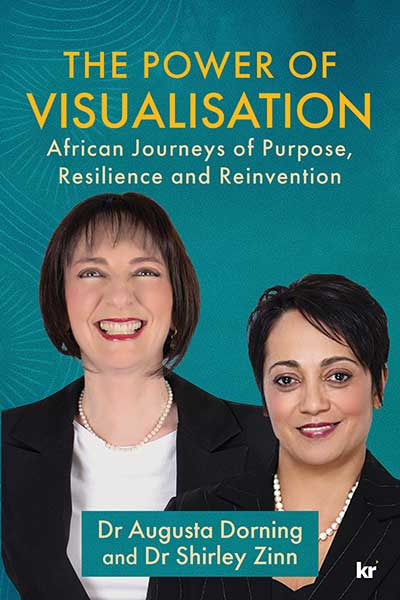Description
When we prepare to go to work every morning, we rarely (if ever) think of the workplace as a unique learning environment with opportunities to continue life-long learning agendas. Today, more than ever, organisations realise the importance of providing development opportunities to people to motivate them, stay competitive and, ultimately, positively impact the bottom-line of business. Mentoring and coaching have come to be used more frequently in organisations to improve organisational competencies.
Having been mentored and coached during my career (often informally) and then coaching and mentoring others towards the end of my formal employment, I have often wondered if coaching, and (to a lesser extent) mentoring, was not just another fad. My own experience was that one could “feel” the difference in oneself, but did it really make a difference to the bottom-line? Could the effects be traced and a return on that investment be calculated?
Could the personal impact also have an organisational impact?
Marius Meyer tackles this question head-on in The Bottom-line Impact of Mentoring and Coaching. He explains why it is difficult, destroys some myths along the way, and cites the results of some international and national studies.
The next question that vexed me, especially as we started to design a company-wide programme for coaching and mentoring interventions, was whether there was any difference (other than cosmetic) between mentoring and coaching. Kay Irissou defines all the terms.
Of course, the next question is whether it really has to be one-on-one, or can mentors and coaches work with more than one person at a time, possibly even teams? Andre van der Bijl maintains that team-building techniques can be applied to increase the success of our mentoring and coaching efforts, and shows us how we can apply these principles.
Diversity is always something requiring thought and, like me, you may have wondered if mentoring and coaching could not be useful here. The Human Capital Review staff obliges by summarising the relevant chapters of The Psychology of Coaching, Mentoring and Learning by Ho Law, Sara Ireland and Zulfi Hussain.
To round off this introductory part, David Clutterbuck writes about coaching and mentoring, which have both come a long way in the past 40 years.
The next part of the book takes an in-depth look at Mentoring.
Niël Steinmann highlights some concerns about formal mentoring with which many of us grapple, and shows us how structured mentoring can work, despite the obstacles.
A mentoring relationship is often embarked upon by people from very different demographics and can be tremendously enriching for all parties, not to mention successful, too. Cindy Dibete and Alex Misch were paired by The Nation’s Trust youth mentorship programme and give insights into mentoring from both perspectives – mentor and mentee.
Adel Du Plessis discusses the ways and means for the new generation of young executives to gain the maximum benefit from mentoring relationships, by reviving the apprenticeship ethos.
Mentoring can be a highly-effective, affordable developmental tool that delivers amazing results. Penny Abbott and Peter Beck highlight six flaws found in many mentoring programmes and show us how to correct them.
Marius Meyer shares snippets of the individual and collective wisdom of 30 HR mentors. Learning from the wisdom and experience of these mentors, we can identify new ways for growing HR practice in our organisations.
The next part of the book deals with Coaching.
Coaching has been around informally for many years. But as it is a new profession, you may be confused as to how to go about selecting a coach who is right for you and your particular needs. Cindy Bell gives advice.
Like death and taxes, constant change is one of life’s few certainties. The rate of change this century has increased exponentially, and the ability to adapt to change is now a critical factor in the survival of organisations. So how do organisations use coaching to equip themselves to adapt to rapid change? Samantha Stewart answer this question.
Despite the current popularity of coaching, the value of coaches external to business has struggled for recognition. Dale Williams explains why, and also shows how to calculate the ROI.
In this insightful article, Karel van der Molen explores the concept of coaching, its many benefits in helping others to achieve peak performance, the qualities of a good coach, and the manager’s role as coach.
Natalie Witthuhn Cunningham feels that action is needed to winnow out bad and ineffectual coaches. One way to assist in developing credibility for the profession is for the end users (the clients and organisations) to be rigorous in their selection process of coaches. Charlatans would then be weeded out.
Kathy Bennet and Helen Minty discuss the benefits of coaching and its role in building people’s emotional intelligence and enhancing their personal and work-related life performance.
With clients on the lookout for approaches that will produce the best results with the smallest possible capital expenditure, it is a great time for those who use strengths-based coaching approaches. In this article, Robert Biswas-Diener introduces us to the strengths-based approach to coaching and educates us about some of the related background research. He goes on to explain some practical strategies for using this information in your own practice or organisation.
The next section in this book deals with the practice of using Managers as Coaches, adopting a so-called coaching style of leadership.
Antionette Gmeiner shares a case study to explain that coaching is the art of bringing out the greatness in people in a way that honours the integrity of the human spirit. It is both an innate human capacity and a teachable skill, which has now become a new way of working with people within a corporate context.
Many organisations are now expecting line managers to coach employees, but managers often find coaching difficult. The good news is that with the correct training and support, line managers can excel at coaching. Penny Abbott and Peter Beck show us how managers can be prepared to fill this important role. They provide us with a practical coaching model that can be readily applied within organisations.
Increased communication with more sharing and openness, the identification of personal areas for future development, skills improvement, and increased motivation. These are some of the spin- offs that one can expect organisationally when coaching managers to be coaches, not to mention the increased productivity which naturally results from good management–worker relations. Helen Minty and Kathy Bennett take us through their case study, which brings these and many other dynamics into clear focus.
We conclude with a short chapter about Coaching Models.
In a series of articles, Dr Sunny Stout Rostron introduces a variety of coaching models and gives examples of how to facilitate a coaching conversation using each one. In the first article, she focuses on the Purpose, Perspectives, Process Model and outlines how this model can be used to develop a structured approach to your coaching conversation, and how to contract with the client, structure the entire coaching journey and guide your coaching conversation.
In the second article she explores the nested-levels model of coaching, which first looks at the horizontal level of “doing”, then goes a level deeper to “learning”, and finally reaches a third “ontological” level, where new knowledge emerges about oneself and the world.
In the third article she examines the use of Otto Scharmer’s U-process model for coaching individuals and groups.
How Can I Approach The Human Spirit? – The New Coach’s Transformation, taken from The Philosophy and Practice of Coaching: Insights and issues for a new era by David B Drake (Editor), Diane Brennan and Kim Gørtz, is a profound lesson for coaches new and old.
We conclude with an example of a generic mentorship/coaching agreement by Kate Tucker.
The Editor















